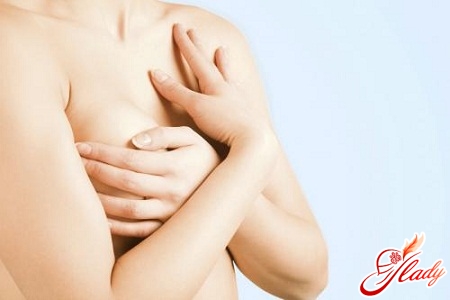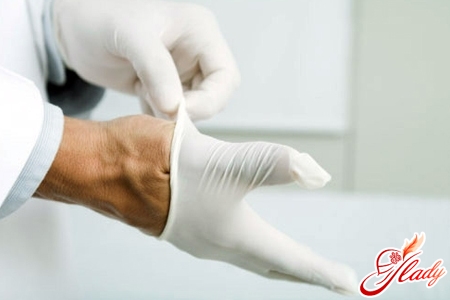 Of course, they constantly think about their breasts.almost all women. However, their thoughts do not always concern really important issues concerning the health of the mammary glands. Much more often, a woman is concerned about the shape and size of her breasts. However, such neglect of one's health can be too expensive. Every second woman at least once in her life has experienced painful sensations and discomfort in the mammary glands: painful engorgement, especially before menstruation, any seals or even incomprehensible discharge from the nipples that are in no way related to breastfeeding. Moreover, very often, even in this case, women do not attach much importance to their condition. And in vain - all these are symptoms indicating one or another disease of the mammary glands, which can progress and take chronic forms, having the most negative effect on the general health of a woman and even posing a threat to her life. Before telling about the main diseases of the mammary glands, it is necessary to refresh the memory of readers and briefly tell about the structure of the female breast. The cells of the mammary gland are grouped into lobules. Each lobule of the mammary gland ends with a milk duct. All the lobules create about 20 segments, which have the main milk duct, which takes the milk out. The structure and condition of the mammary glands are influenced by a huge number of factors. Among the main ones are: the general health of the woman, the phase of the menstrual cycle, the state of the hormonal system, nutrition, the emotional state of the woman.
Of course, they constantly think about their breasts.almost all women. However, their thoughts do not always concern really important issues concerning the health of the mammary glands. Much more often, a woman is concerned about the shape and size of her breasts. However, such neglect of one's health can be too expensive. Every second woman at least once in her life has experienced painful sensations and discomfort in the mammary glands: painful engorgement, especially before menstruation, any seals or even incomprehensible discharge from the nipples that are in no way related to breastfeeding. Moreover, very often, even in this case, women do not attach much importance to their condition. And in vain - all these are symptoms indicating one or another disease of the mammary glands, which can progress and take chronic forms, having the most negative effect on the general health of a woman and even posing a threat to her life. Before telling about the main diseases of the mammary glands, it is necessary to refresh the memory of readers and briefly tell about the structure of the female breast. The cells of the mammary gland are grouped into lobules. Each lobule of the mammary gland ends with a milk duct. All the lobules create about 20 segments, which have the main milk duct, which takes the milk out. The structure and condition of the mammary glands are influenced by a huge number of factors. Among the main ones are: the general health of the woman, the phase of the menstrual cycle, the state of the hormonal system, nutrition, the emotional state of the woman.
Mastopathy
Leading place among all diseasesmammary glands is occupied by mastopathy. This disease has become so widespread that most women simply do not attach due importance to it, carelessly believing that it will pass by itself. And really - is it worth worrying about this? Mammologists answer this question unequivocally: of course, it is! The main danger of this disease is the fact that benign tumors very often develop against the background of mastopathy. And where benign tumors occur, malignant tumors are, alas, a stone's throw away. Statistics show that women suffering from mastopathy, especially in the chronic form of the disease, have a five times higher risk of developing breast cancer. But it is malignant neoplasms of the mammary glands that are the main cause of female mortality from cancer in Russia. Very often, the only symptom in the presence of which a doctor can suspect the presence of mastopathy in a woman are diffuse seals and tumor nodes palpated during examination of the mammary gland, which can have a wide range of sizes. Women themselves, as a rule, do not notice any particular concerns caused by these lumps. Most often, they make themselves known by becoming painful or simply sensitive only a few days before and after menstruation, after which they disappear again until the next month. In particularly advanced cases, soreness in the mammary glands can persist throughout the menstrual cycle - sometimes increasing, sometimes decreasing. Lumps in the mammary glands can have both a soft and a dense consistency, depending on the severity of the disease. Painful sensations can be localized both exclusively in the mammary gland and radiate to the armpit area, or even the back. Often, a woman can mistakenly take pain for osteochondrosis or muscle pain. Also, with mastopathy, in addition to lumps and pain in the mammary glands, a woman may have discharge of various colors from the nipples.
Varieties of benign breast tumors
Second in frequency of occurrencediseases of the mammary gland are various tumors. What does the concept of a tumor mean? Doctors call a tumor any pathological growth of glandular tissue formed from altered cells of the genitals. All tumors are divided into two types - malignant and benign. Benign tumors pose less of a danger to a woman's body. As the tumor grows, it pushes aside the surrounding tissues without causing them much harm. These tumors do not extend beyond the mammary gland and are certainly not capable of affecting other internal organs. All benign tumors can have absolutely any shape, size and density. As a rule, the removal of benign tumors occurs without any difficulties or consequences for a woman's health.
- Cyst
A common varietybenign tumor is a cyst. A cyst is a hollow neoplasm filled with fluid. This tumor is always round in shape, with clearly defined boundaries. To the touch, the neoplasm is soft, elastic and mobile.
- Fibroadenoma
Also often encountered is a tumor such asfibroadenoma. It is formed not only from the glandular epithelium of the mammary gland, but also from connective tissue. When palpated, the tumor resembles dense balls, very mobile, but completely painless.
- Intra-flow papilloma
Intraductal papilloma is less common,however, it is also necessary to mention it. It develops in the case when the epithelium grows in the dilated large ducts. Such a disease often leads to the appearance of discharge from the nipples of serous or bloody contents.
- Mastitis
A huge number of people are faced with mastitisbreastfeeding young mothers. Mastitis is an inflammatory process in the mammary glands. Mastitis can be caused by various factors - hypothermia, milk stagnation, and the penetration of pathogenic bacteria into the mammary gland. As a rule, they enter through cracks in the nipples.
Malignant tumors of the mammary gland
Malignant tumors are verya serious danger to both the health and life of a woman. It is impossible to control the growth of malignant tumors today. That is why any malignant tumors should be eliminated as quickly as possible. Malignant cells grow at a rapid rate. That is why timely and correct diagnosis of the disease is so important. If the tumor is not eliminated immediately, malignant cells very quickly grow beyond the mammary gland. Penetrating through the walls of blood vessels into the blood, cancer cells can penetrate into any other organ, gain a foothold and grow there. This phenomenon in medicine is called metastasis. And the later the disease is diagnosed, the more metastases will have time to appear. In addition, timely diagnosis is very important for choosing the right treatment tactics. After all, the more advanced the process, the fewer treatment options remain in the doctor's arsenal. And the fewer, frankly speaking, the chances of recovery remain for a woman.
Risk group for breast cancer
Risk of developing a malignant tumorexists in absolutely every woman. It's just that for some it's minimal, while for others it's quite high. There are so-called risk groups. A woman is included in this group if she has at least one of the above factors:
- Age of the woman
The older a woman is, the higher her chances areencounter breast cancer. For example, at 25 years of age, cancer is extremely rare, whereas after 40 years the risk increases significantly, reaching its maximum at about 65 years. After 40 years, every woman should visit a doctor - a mammologist twice a year. Such a measure will allow to detect the disease at its early stage.
- Genetic factor
Also very attentive to their healthThere should be women in whose family someone from close relatives – mother, grandmother, sister – has faced cancer. The risk in such cases increases twofold.
- Late first birth
Also the level of risk of developing cancerTumors significantly increase the risk of first births at the age of over 35. This risk increases even more if a woman, having given birth to a child, for some reason refuses to breastfeed.
- Time of onset of menstruation or menopause
The risk of developing breast cancer is significantly higher in women who had their first menstruation too early – before age 12, or menopause too late – after age 55.
- Previously there were various diseases of the breast.
- Abortions and miscarriages.
- Violation of normal hormonal background, irregular menstrual cycle.
- Excessive body weight, smoking, drinking, stress.
- Overuse of a visit to the solarium.
If you belong to a risk group,you need to visit a doctor more often than other women – at least twice a year. A gynecologist, surgeon, or oncologist can detect the presence of a malignant tumor of the mammary glands. However, only a mammologist can conduct the most complete examination, which includes cytological and histological examination, ultrasound diagnostics, and mammography. By the way, these specialists can also help a woman with other problems with the mammary glands – postpartum mastitis, cracked nipples, etc.
Prevention of breast diseases
Unfortunately, despite the fairly highlevel of modern medicine, it is simply impossible to completely prevent the development of cancerous tumors. However, it is quite possible to significantly reduce this probability. Moreover, every woman can do this - lead a healthy lifestyle and follow the recommendations discussed below.
- The first pregnancy
Breast Diseases and Pregnancyare directly related to each other. You should not constantly postpone the onset of your first pregnancy for later. Of course, a career is a very important stage in the life of any woman. However, you should not forget about your own health. The main guarantee of the health of the mammary glands is a timely pregnancy, before the age of 35. After all, the most important task and purpose of the mammary glands is to provide milk to a small person. And if for some reason the mammary gland did not perform its function, unfavorable pathological processes begin inside the cells.
- Painful sensations
If a woman has breast pain, the disease, as a rule, can no longer be avoided. To avoid various complications, seek help from a doctor as soon as possible.
- Choosing a bra
Many women, when buying beautiful underwearlingerie, do not even think about the fact that a bra should not only be beautiful, but also comfortable. It should not squeeze or pull the chest, thereby disrupting normal blood circulation. In addition, special attention should be paid to sports bras. They should properly support the chest so that it is not subject to shaking during running and jumping.
- Cold water
A wonderful tonic for the chestis cold water. The cold makes the cells of the pectoral muscles contract intensively. Thus, the natural elasticity and firmness of the skin of the chest is restored. You can direct a stream of cold water directly to the chest, or simply wipe the skin of the chest with ice cubes.
Breast Care
Of course, care for the décolleté area and the skin itselfbreasts is a very important and necessary measure. They should be cared for no less thoroughly than the skin of the face. However, many women, in pursuit of beautiful breasts, forget that they can harm their health. Today, various food supplements and creams designed to increase breast size are freely available. However, in reality, the most they can do is make the skin of the breast more elastic and firm. These drugs cannot affect the size of the mammary glands in any way. But they can cause harm, and considerable harm. First of all, a woman’s hormonal balance can suffer. That is why, if you still decide to use such products, keep your hormonal balance under control, systematically donating blood to determine hormone levels. Today, it is possible to really increase breast size only with the help of mammary gland prosthetics. However, none of the materials from which breast implants are made is completely safe for a woman’s health. Therefore, remember that breast augmentation is an extreme measure. And in no case should surgical intervention be performed if the woman has not reached at least twenty-five years of age. This requirement of doctors - mammologists is explained very simply - the complete and final formation of the mammary glands ends only by 44 - 25 years, even if the woman already has a child. And earlier surgical intervention is fraught with the development of all sorts of complications, including the development of malignant tumors. And finally, I would like to repeat once again - the earlier the disease is detected, the higher the chances of a woman's complete recovery. This is why it is so important to remember three important components of health: regular monitoring by a doctor - a mammologist, timely mammography and regular self-examination. Any doctor will tell you how to properly conduct self-examination - a surgeon, a gynecologist, and, of course, a mammologist. In no case should you ignore this measure - just a few minutes a day can save not only a woman's health, but also her life! We advise you to read:









